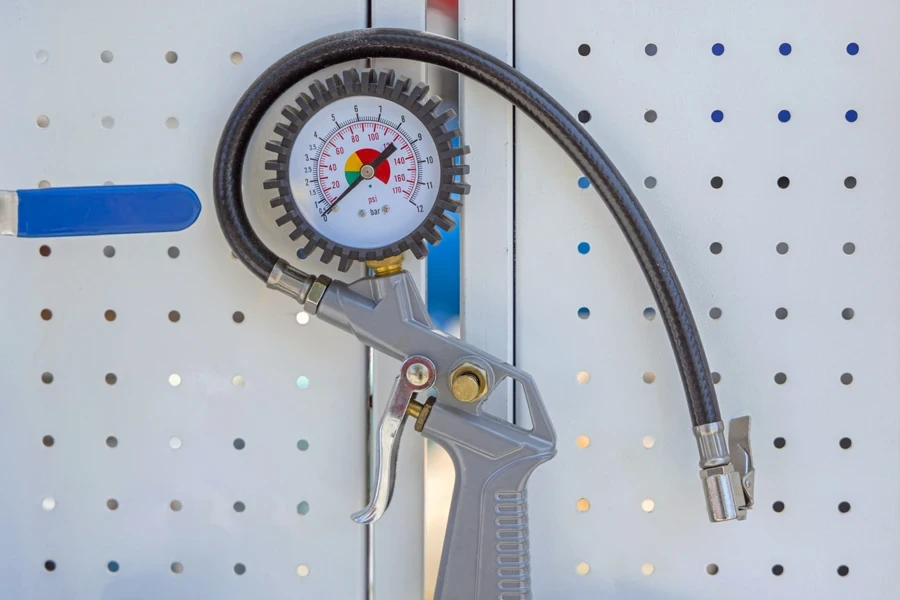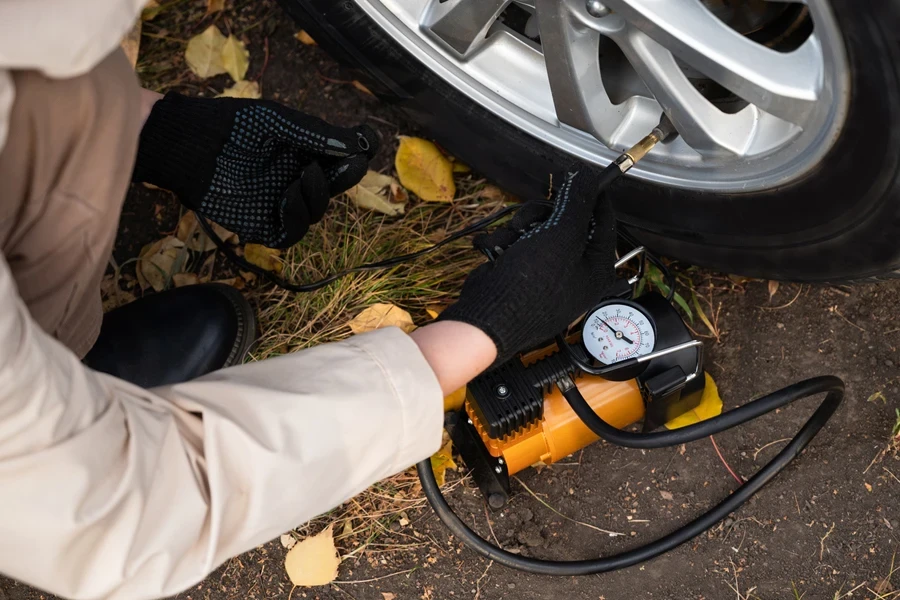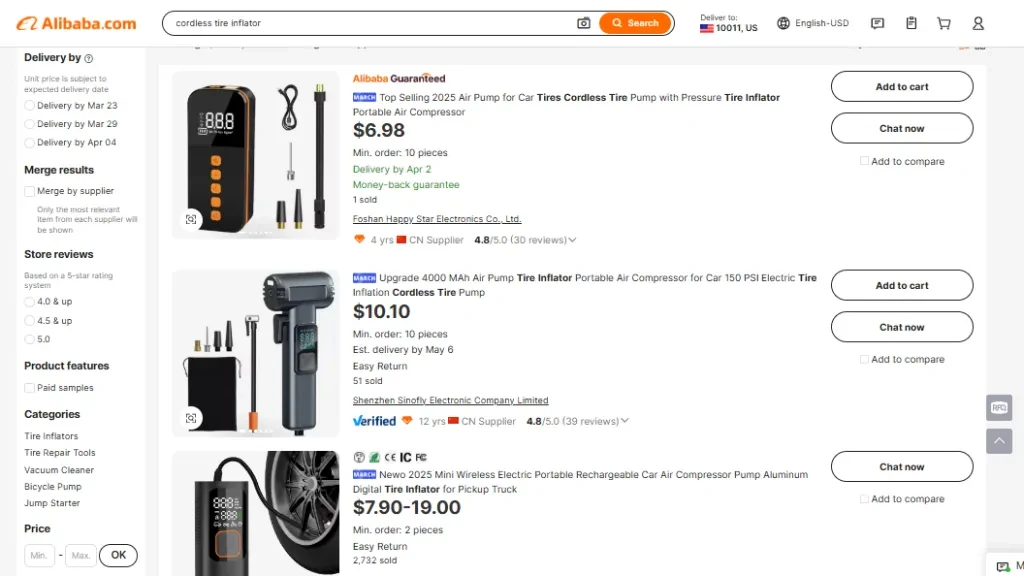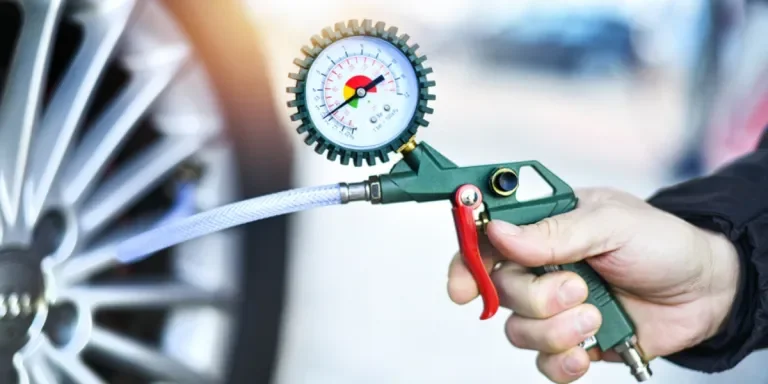If the target customers are drivers, cyclists, or even outdoor enthusiasts, chances are they’ve needed a quick and reliable way to inflate tires at one point or another. That’s why stocking tire inflators is a natural consideration for retailers catering to them. But how do businesses decide which tire inflators deserve space on their shelves (virtual or otherwise)?
Keep reading to explore the factors retailers must consider (from technical specs and product variety to merchandising tips and after-sales support) so they’ll be in a prime position to meet their customers’ needs.
Table of Contents
What is a tire inflator? And what are its benefits?
Types of tire inflators
1. Pre-set vs. manual
2. Corded vs. cordless
3. Specialty variants
Must-have features: How to stock the best models
1. Maximum pressure (PSI)
2. Duty cycle
3. Gauge visibility and accuracy
4. Portability and weight
5. Extra attachments and accessories
Common questions (FAQs)
1. How much PSI is enough?
2. Is a cordless inflator truly better?
3. Are there special considerations for winter weather?
Wrapping up
What is a tire inflator? And what are its benefits?

A tire inflator is a device that pumps air (typically from the surrounding environment) into tires through their valve stems. Most models use a built-in electric motor or a rechargeable battery to power a pump pressuring ambient air. When used correctly, these inflators ensure that tires maintain the proper PSI (pounds per square inch), which offers numerous benefits:
- Enhanced safety: Properly inflated tires improve handling and reduce the likelihood of blowouts.
- Better gas mileage: Under-inflated tires lead to increased rolling resistance, cutting into a vehicle’s fuel efficiency.
- Extended tire life: Optimal pressure levels help tires wear more evenly, so consumers get more mileage before needing a replacement.
Since the tire inflator addresses one of the most common vehicular maintenance tasks, it’s a big selling point. Almost any driver can relate to the inconvenience of a slow leak or a flat tire.
Types of tire inflators

Not all inflators are built the same. They can vary by their power source, extra features, and intended use. Here are some key categories retailers will likely encounter as they explore supplier options.
1. Pre-set vs. manual
Pre-set inflators have electronic controls that let the user dial in the desired PSI. Once the user reaches that point, the inflator will shut off automatically, making it perfect for anyone handling multiple tasks or not wanting to babysit the gauge.
Retail tip: Highlight convenience and precision. Keep a few in stock if your clientele includes drivers who value a hassle-free experience.
On the other hand, manual inflators require users to monitor the pressure gauge and stop inflation at the right moment. Despite this drawback, they are more cost-effective and often compact.
Retail tip: Manual inflators are a solid choice for budget-conscious shoppers or those who prefer simpler, traditional tools.
2. Corded vs. cordless
Corded models are typically powered by a 12V car outlet (commonly known as the cigarette lighter socket) or, in some cases, a 120V wall outlet. They are reliable if the car battery (or power source) functions well. Corded models are attractive to people who use inflators near their vehicles or who don’t want to deal with battery maintenance.
In contrast, cordless models use rechargeable batteries (built-in or removable), offering portability and freedom from cords or external power sources. They are perfect for customers who travel frequently, enjoy camping, or want a device that can double for inflating sports gear, inflatable mattresses, etc.
3. Specialty variants
Portable tire inflators
These are small, lightweight, and often stored in a car trunk. They may also include useful extras like LED lights for nighttime use or multiple nozzles for inflating various items.
Digital tire inflators
These models have digital displays, often with an auto shut-off to prevent overinflation. They cater to users who crave accuracy and a modern interface.
Heavy-duty units
Manufacturers build these models for commercial fleets, large trucks, or industrial use. They typically have robust motors, higher airflow, and longer duty cycles.
Must-have features: How to stock the best models
Each inflator you stock should meet the practical requirements of your typical shopper. No two inflators are identical; certain specs can make a product stand out in a crowded market.
1. Maximum pressure (PSI)

Standard car tires usually require about 30–40 PSI, but consumers might want inflators that reach 100 PSI or more for broader usability. Usually, a higher PSI means faster inflation, a point worth advertising to customers who value efficiency. It may also give users better versatility for other inflatables (like bike tires, sports equipment, etc.).
Inflation speed
Speaking of inflation speed, it usually refers to how many minutes it takes to go from flat to a certain PSI. Some very fast inflators can reach 30 PSI in over a minute, while slower models can take up to 6 minutes to get similar results.
Customers in a hurry or those who might be inflating multiple tires simultaneously will always pay close attention to speed claims. So, before stocking, look closely at the manufacturer’s L/min rating and reviews that may mention inflation times.
2. Duty cycle
How long can the unit run before it cools down? A 15-minute duty cycle is fine for casual consumers, but commercial users need something that can handle back-to-back inflations. Here are some things to keep in mind when stocking:
- Many portable 12V DC inflators offer intermittent duty cycles, which can handle short uses, like inflating one or two tires at a time.
- Consumers who frequently inflate multiple or large tires will need a compressor with a higher duty cycle rating or a continuous-duty model.
- Remind consumers to monitor the inflator’s temperature. They must let it cool down if it becomes excessively hot, even if it hasn’t reached the manufacturer’s duty cycle limit.
3. Gauge visibility and accuracy

Digital gauges tend to be easier to read (and often more precise), while analog gauges can be cheaper but harder to see in low light. A backlit display is also a helpful feature that can attract customers who inflate their tires after dark.
4. Portability and weight
The lighter and more compact a tire inflator is, the easier it is to store in a trunk or glove box—an appealing feature for spontaneous “just-in-case” buyers. However, portable models often come with drawbacks that are hard to ignore. Here’s a closer look:
| Feature | Small, portable 12V DC | Cordless, battery-powered | Larger, heavy-duty 12V |
| Weight | 1–3 lbs | 2–5 lbs | 5–10+ lbs |
| Portability | Very high | High | Moderate |
| Benefits | – Compact and lightweight – Affordable – Good for emergency use | – Wireless convenience – Versatile usage – Easy to store | – Powerful and fast inflation – Durable enough for frequent use – Perfect for large tires |
| Drawbacks | – Slower inflation – May overheat with prolonged use – Limited power | – Battery life can be a concern – May be more expensive – Battery charging required | – Heavier and bulkier – May require direct connection to a vehicle battery |
5. Extra attachments and accessories

Consider offering extra attachments and accessories. For example, additional nozzles can extend the use of this device to bike tires, sports balls, or inflatable toys. Integrated lights or carrying handles can also make using inflators easier. These small extras can tip the scales when a customer chooses similar products.
Common questions (FAQs)
1. How much PSI is enough?
Most passenger vehicles range around 30–40 PSI, while trucks or certain off-road cars often have higher requirements. As mentioned earlier, it’s better to stock inflators that can hit at least 100 PSI to accommodate various needs.
2. Is a cordless inflator truly better?
It depends. If portability and convenience are important to the customer, then yes. A corded 12V or 120V might be sufficient and more affordable for someone who only inflates tires in their driveway.
3. Are there special considerations for winter weather?
Cold air contracts and may trigger low-pressure alerts. Customers in colder climates may want a reliable inflator in their trunk. So, retailers can show them heavier-duty models with proven performance in low temperatures.
Wrapping up
Stocking tire inflators can be a game-changer for a wide range of retailers—particularly those serving drivers looking for easy, do-it-yourself automotive maintenance solutions. The key is to carefully curate your inventory based on essential features (pressure capacity, duty cycle, gauge visibility, power source) and match them to your customers’ priorities: price, convenience, heavy-duty performance, or brand reputation.




